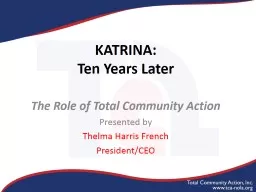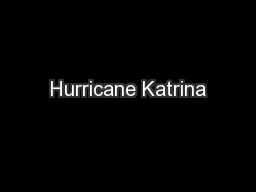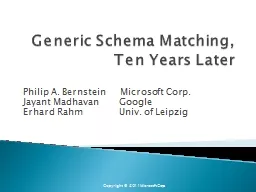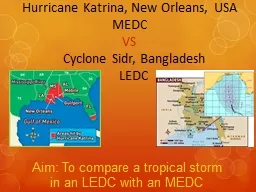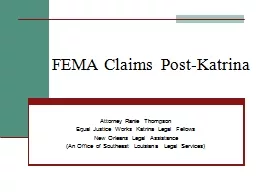PPT-KATRINA: Ten Years Later
Author : celsa-spraggs | Published Date : 2016-08-03
The Role of Total Community Action Presented by Thelma Harris French PresidentCEO J Kelley Terry AICP NCRT Director Planning Research amp Development Glenis Scott
Presentation Embed Code
Download Presentation
Download Presentation The PPT/PDF document "KATRINA: Ten Years Later" is the property of its rightful owner. Permission is granted to download and print the materials on this website for personal, non-commercial use only, and to display it on your personal computer provided you do not modify the materials and that you retain all copyright notices contained in the materials. By downloading content from our website, you accept the terms of this agreement.
KATRINA: Ten Years Later: Transcript
Download Rules Of Document
"KATRINA: Ten Years Later"The content belongs to its owner. You may download and print it for personal use, without modification, and keep all copyright notices. By downloading, you agree to these terms.
Related Documents

